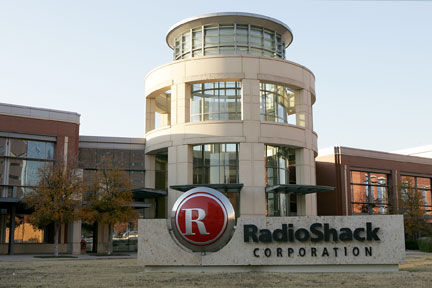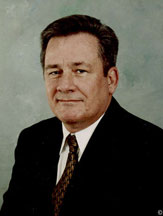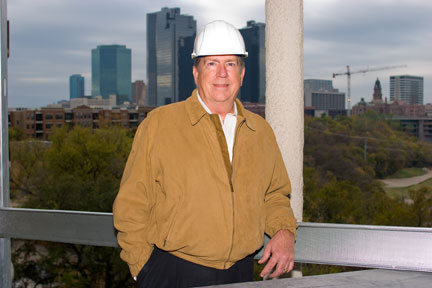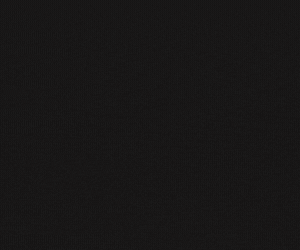“It was a debacle from the beginning. You should stop construction, mothball those buildings, and cut your losses.”
That’s what Kyle Poulson, a partner in the Fort Worth-based global real estate firm of NAI Huff Partners, said he told Tarrant County College District officials last October, his advice on the fate of the district’s two unfinished buildings on the south bluff of the Trinity River downtown. They were the first phase of a sprawling urban campus venture begun in 2006 that has since become mired in controversy and cost overruns. To date, the district has sunk more than $100 million into the deeply troubled project with only the skeletons of two buildings to show for it.
Poulson, of course, isn’t the only one in town who thinks the bluff campus is a boondoggle and a black hole sucking in taxpayer dollars. The TCC board itself voted to scrap the original plan almost a year ago when it was at least four years behind schedule with projected costs of completion nearly triple its original estimated price and no signs of any let-up in the escalation. That’s why the district has spent $300 million since June to buy and renovate the 35-acre, 900,000-square-foot RadioShack headquarters a few blocks away as a substitute downtown campus. The change in direction was made to bring “cost certainty” to the project, Chancellor Leonardo de la Garza said at the time. But that hasn’t happened either
Since June, as the board floundered in indecision over what to do with the bluff site, work on the unfinished buildings has slowed to a crawl, yet costs continue to pile up under construction contracts signed long before the board switched horses.
Then in February, a split board voted to release money to speed up work to finish the “shell” of the bluff buildings. The vote didn’t authorize contractors to finish the buildings as an educational campus, as some news outlets reported. However, the vote did indicate the desire of a majority of the board, at the urging of de la Garza, to do just that in the near future – which would give the community college two downtown campuses three blocks apart, as well as a controversial sunken plaza and tunnel to connect the site to the river.
The price tag on the bluff project just east of the historic Tarrant County courthouse is now approaching historic dimensions of its own. By the district’s own estimates, if completed, it will cost seven to 10 times that of most public college buildings in Texas, and it far outstrips the per-square-foot costs of any other recent downtown Fort Worth project. Estimated costs of the two buildings have increased fivefold between May 2007 and February 2009, without any explanation from the keepers of the public purse for such a dramatic rise. If the chancellor and the current board majority prevail and the bluff site is completely built out, the combined costs for the two downtown campuses will total more than half a billion dollars.
If all that makes your mind reel, it puts you in the same boat as a few dissident members of the TCC board, some local real estate experts, folks who helped found the TCC district 40 years ago, and taxpayer watchdogs, as the list of bizarre revelations continues to grow concerning what one critic has called the “Taj Majal on the Trinity.”
Nothing has more confounded TCC’s critics and supporters alike than the projected unit costs of completing the bluff buildings for academic use. By the district’s own unblushing admission at a February board meeting, the cost of completion would be $1,538 per square foot – compared to the $225 per-square-foot cost of the average college building in Texas, or $300 for recent private construction in downtown Fort Worth.
“The cost per square foot is crazy, absolutely off-the-wall crazy,” Poulson said, his voice rising with incredulity. “I’m really upset about it. This has to be the highest per-square-foot cost of any building in [Tarrant County] history.” If this had been a development using private funds, he said, “It never would have gotten off the ground.”
 Poulson’s company has been a part of the city’s real estate landscape for 23 years and is a major player in the redevelopment of the 7th Street corridor between downtown and the Cultural District “If anyone had suggested to any developer here that they would be building anything costing 1,500 bucks a square foot, [the developer] would have laughed him out of the room,” he said. “The project is far too expensive for the taxpayers to put any more money into it.”
Poulson’s company has been a part of the city’s real estate landscape for 23 years and is a major player in the redevelopment of the 7th Street corridor between downtown and the Cultural District “If anyone had suggested to any developer here that they would be building anything costing 1,500 bucks a square foot, [the developer] would have laughed him out of the room,” he said. “The project is far too expensive for the taxpayers to put any more money into it.”
At a meeting of real estate professionals, college officials, and others in October, Poulson said, “I voiced my opinion, very strongly, that [the district] should immediately stop construction and put the buildings on the market for whatever they can get.” When he finished speaking, he said, “no one stood up and said ‘No, no, this has to move forward.’ “
To date, the district has spent $100.6 million on construction of the two buildings with a combined gross area of about 132,000 square feet, according to documents released by the district to Fort Worth Weekly under an open records request. Completing them will cost an additional $103 million, according to the documents.
(There are two smaller buildings on the bluff site with a total of 15,700 square feet, that Vice Chancellor David Wells told the board could also be completed, but no cost has yet been associated with them. The only announced cost estimates are for the two larger buildings.)
About $62 million has gone to the project’s construction manager, Austin/Con-Real, which reported to the board in May 2007 that the cost of the two bluff buildings at that time would be $40.7 million. A year later, the projected costs had risen to $170 million. By February 2009, it was $203 million.
“That’s a $33 million, 20 percent increase in only eight months, with no explanation. … TCC’s abysmal record in construction cost control has only gotten worse.” said Arlington tax watchdog Bob Mhoon, a retired naval officer and former adjunct professor at TCC. He’s been the bane of the TCC administration for his relentless requests for public documents – especially those pertaining to the downtown campus, which he has called a massive waste of taxpayer dollars that should be going to scholarships for students rather than to build a monument to the chancellor and the board.
Even board members can’t get an explanation for the zooming costs. Trustee Joe Hudson, elected last year after campaigning to lower tuition costs, rein in spending, and stop the downtown project, said he can’t get answers from the chancellor other than vague references to increased construction costs. Calls to de la Garza seeking comment for this story were not returned.
Hudson said that the true costs are even higher than what has been reported to the board. The usable footage of the two buildings is only about 100,000 square feet, he said, bringing the unit costs “a lot closer to $2,000 a square foot.” Hudson, trustee Robyn Winnett, and board vice president Bobby McGee have all argued for the bluff site to be mothballed and sold as is, but the crew is one vote shy of a majority.
Even Fort Worth Star-Telegram business writer Mitch Schnurman, in a recent column endorsing the completion of the two buildings with plaza and tunnel, wrote that “the square foot costs … are arguably the highest for any building in Texas,” although he didn’t report the actual numbers.
It is not as if the board is ignorant of the giant chasm between the costs of the bluff project and other projects being built locally and around the state. McGee has made that point repeatedly in board meetings, and comparison figures are easily found on the internet.
New office buildings are going up all around the bluff site for around $200 a square foot, according to McGee, who is chairman and CEO of a private equity fund. Poulson said that the new construction along the 7th Street corridor is coming in at no more than $300 per square foot.
Public school buildings are being built at an average cost of $148 per square foot, according to the National Clearinghouse forEducational Facilities. And the Texas Higher Education Coordinating Board reported on its web page that the average cost of newly constructed public university classrooms built between 2004 and 2008 was $225 per square foot. A new engineering facility at the University of Texas at Arlington that includes “state-of-the-art” multi-disciplinary research and teaching labs, classrooms, faculty and graduate student offices, administrative offices, conference rooms, and a system for recycling rainwater is being built for $500 a square foot, according to the UTA web site.
At a February meeting, TCC trustees got another briefing on the costs of completion before a majority voted to put more money into it.
“This is an institute of higher learning,” said one critic, “but they don’t even know the first rule of holes: When you’re in one, stop digging.”
The February vote signaled the majority’s intent to have the buildings completed but didn’t authorize the full completion work to go forward because they couldn’t pay for it – the project fund is depleted for this fiscal year. The board authorized spending $34.5 million from the project’s reserve fund only for work on the outside shell. Contrary to reports in several news outlets, Hudson said, “The board did not vote to complete the project.” But that vote could come in July when the district’s new fiscal year budget will be adopted, Hudson said. He hopes that by then there will be one more vote to kill it.
Making the board’s decision even harder to understand is the fact that the RadioShack complex, with its 900,000 square feet of usable space, is more than adequate for the educational programs slated to be offered there, Hudson said. The district’s original plan for a downtown campus called for 800,000 square feet of usable space. So even if the costs for the bluffside buildings were reasonable, he said, “We don’t need the space.”
Just when you think the controversies over the downtown project have been exhausted, another list bobs to the surface.
The latest came from a report delivered to the board in October 2008 by homebuilder Robert Kembel, president of the Dallas-based Huffines Communities. The district had asked him to chair a meeting of about 30 people, including officials from the Trinity River Vision Authority, the Tarrant Regional Water District, TCC staff, and a long list of real estate brokers and developers, including Poulson, two of his company’s executives, and others from prestigious Fort Worth firms such as Hillwood Properties, Sundance Square, Richard Minker Co., and Struhs Commercial Construction. They’d been called together by the district to get their input on the “ultimate disposition” of the district’s original downtown campus properties and the bluff site. Kembel’s report from the meeting was released to the Weekly under an open records request. Among its revelations:
- The bluff project is sitting, in part, atop land that the district does not own. A pocket of land totaling about a half acre still has no clear title and therefore has not been purchased by the district, even though it is now under the buildings being constructed.
- The district has yet to obtain a crucial permit needed from the U.S. Army Corps of Engineers and the Tarrant Regional Water District for an outfall at the bluff site designed to protect the water quality of the river, a permit they must have whether they finish the buildings or sell the site for others to use. (A large part of the delay of the original project, adding to the increased costs, was due to the district’s failure to apply for another critical permit from the Corps that required in-depth environmental and cultural impact studies before TCC would be allowed to build the half of its project planned for the levee on the north side of the river, which is under Corps jurisdiction. The district inexplicably tore out a huge chunk of the historic south bluff and began construction without first applying for the needed permit, raising the ire of historic preservationists, taxpayer watchdogs, and downtown stakeholders alike, and causing the agency to begin the permitting process on its own. The Corps spent at least $150,000 on the process before TCC abandoned the north-bank half of the project.) The report further stated that engineers at the meeting strongly recommended the district complete both permitting processes right away because of their future value to the district or any private user, regardless of the final outcome. Not getting them, Kembel wrote, “could negatively impact the land value in the future.”
- In another environmental misstep, the district has yet to submit a pollution mitigation plan to the Texas Commission on Environmental Quality for cleaning up a heavily polluted portion of the old TXU electric generating plant that the district bought as part of its original plans for a downtown campus. Time is running on that one, Kembel wrote, and costs of clean-up will continue increasing the longer the district delays. TCC bought the site from TXU “as is,” assuming liability for the toxic wastes that were known to be there rather than requiring TXU to pay for cleaning up the pollution it created, as is the now common, and accepted practice. David Wells, the TCC vice-chancellor overseeing the downtown campus projects, told the Weekly in an earlier interview that the college had agreed to assume liability in order to close the deal; otherwise TXU was not going to sell. But TCC even now has no clearly defined purpose for the TXU property other than a vague idea floated by Wells for an electricity museum. Wells has not returned calls for comment on this story.
The group at the October meeting concluded that the district’s current estimated costs to complete the bluff buildings were “significantly more” than their market value in the private sector. Their recommendation was blunt: “Terminate the current construction contract and take the building to a shell state at the lowest possible cost … until a longer-term solution could be determined.”
 Poulson said he and his partners recommended going one step further – “Sell for whatever they can get immediately and cut the taxpayers’ losses.” One of the developers, who asked not to be named, told Kembel the buildings may be worth only $30 million to $35 million in today’s market. Neither his nor others’ individual comments were included in the report.
Poulson said he and his partners recommended going one step further – “Sell for whatever they can get immediately and cut the taxpayers’ losses.” One of the developers, who asked not to be named, told Kembel the buildings may be worth only $30 million to $35 million in today’s market. Neither his nor others’ individual comments were included in the report.
The meeting apparently produced other revelations that Kembel did not include in his report, but that were described by Poulson and others, showing how the stated purpose of the bluff campus keeps changing. After the purchase of the RadioShack property, the chancellor said that the original buildings on the bluff might be used for administrative offices and continuing education classes. All of the health science programs and the nursing program would be transferred from other campuses to RadioShack. But the latest version, according to those at the meeting, is that the bluff campus would contain administrative offices and a “simulated hospital” for the health science/nursing programs – an idea never mentioned publicly in any earlier pronouncements.
“I’d not heard that one. … Absolutely a horrible idea simply to find a way to make use of that facility. …These students don’t need any simulation. They need to be in a real hospital setting to learn,” said tax watchdog Mhoon.
Minutes from a board workshop on September 24 show that a “simulated hospital” was proposed that day – but for late 2012 in a building on the RadioShack campus where the school of nursing and other health science programs were to be located. One board member who attended the workshop but asked not to be named, said that the September workshop was the first mention of a “simulated hospital” as part of the nursing curriculum and to date there has been no discussion for its need.
And documents from the February 18 board meeting that were presented to the board detailing all past and projected bluff complex usages and costs, do not mention a “simulated hospital.”
But perhaps the most instructional portion of the report is the recommendation by participants that the board hire a real estate development professional to organize a group consisting of TCC staff, private-sector real estate professionals, and select board members to study the options available to the board and to challenge and test all cost assumptions to “insure the board has the best information on which to base a final decision.”
That recommendation seems to have been the only one taken seriously. By November the board had hired – guess who? – Robert Kembel at a salary of $100,000 to head up that effort. And who did Kembel choose as the other “private- sector” professionals to assist him to study the “options available” and to “challenge and test all cost assumptions”? Austin Con-Real, which has the contract as the construction manager of the bluff project, and TPG/Parsons, the original downtown campus project manager, both of which would stand to lose considerable amounts of money if the project is cancelled or to make large profits if the bluff is built out. A third member of the team, Austin attorney Joe Davis, has no apparent conflict of interest. (Poulson volunteered at the October meeting to serve on an advisory committee but was never called, he said.)
With that kind of help, it was no surprise, Hudson said, when in February the chancellor “got what he wanted” from Kembel. The Dallas developer of upscale housing communities came to the board with his final recommendation, which was, in essence: Build, baby, build.
 “Mr. Kembel’s report was just a cheerleading exercise to encourage completion of the project [and] was almost identical to one presented by Dr. de la Garza to … board members [in September],” Hudson said. “There were no options [presented] other than estimated costs for various stages of construction.”
“Mr. Kembel’s report was just a cheerleading exercise to encourage completion of the project [and] was almost identical to one presented by Dr. de la Garza to … board members [in September],” Hudson said. “There were no options [presented] other than estimated costs for various stages of construction.”
Hudson asked Kembel when he was hired in November to include in his evaluation an estimate on what it would cost to stop construction immediately. That cost was not in the report, even though Kembel promised Hudson he would have it before the first of the year. Hudson said he is still waiting.
Kembel’s report also included what seemed to be an attempt to portray the costs of the bluff project as minimally as possible. He combined the RadioShack square footage and cost, including land, with the bluff buildings’ square footage and cost, excluding land, as if the two were one project, with a per-square-foot cost of – voila! – $394.
Those who routinely figure per-square-foot costs of construction say that kind of mixing apples and oranges is never done. One veteran builder here, who asked not to be named, pointed out the errors involved in combining costs figures in such a way: The bluff is a new construction site, and construction costs in those situations routinely leave out the costs of acquiring land. RadioShack, on the other hand, was purchased with buildings already completed, and the price included land and buildings. so its square-foot costs can include the land. The two projects can’t be properly combined for figuring unit costs, even if the projects are going to be used for the same purpose. This builder said he’d “never heard of anyone doing that.”
 Brian Gutierrez, vice chancellor of finance at Texas Christian University, said it’s difficult to compare unit costs from building to building because so many factors are at play – from materials to sloping ground to specific purposes of the structure. TCU figures all square-foot costs separately for each building, he said, even if they are built side by side, because it is the only way to get “an honest cost of the building.” While he wasn’t eager to compare costs with TCC, he did say that $1,538 a square foot “is clearly a lot.”
Brian Gutierrez, vice chancellor of finance at Texas Christian University, said it’s difficult to compare unit costs from building to building because so many factors are at play – from materials to sloping ground to specific purposes of the structure. TCU figures all square-foot costs separately for each building, he said, even if they are built side by side, because it is the only way to get “an honest cost of the building.” While he wasn’t eager to compare costs with TCC, he did say that $1,538 a square foot “is clearly a lot.”
Still, Kembel and the chancellor did find one ally at the October meeting. Tom Struhs, the man behind the $350 million development of high-end condos and apartments along the Trinity River overlooking the unfinished TCC site, said that in spite of the cost he now believes the buildings should be completed for additional classroom space.
“Unlike developers who only look down the road for 20 or 30 years when planning new projects, a college is looking to be around for the next 100 or 200 years,” he said. “In spite of the high costs, completing the buildings will be a good investment for the taxpayers in the long run,” he said. Struhs said he’s gotten to know the chancellor and is convinced that he and the board have “acted in good faith” and have always wanted to do what’s right for Tarrant County and the students. The chancellor, he said, “is a dedicated public servant.”
Completion of the buildings may also be good for Struhs. Documents released to the Weekly by TCC under an open records request, after the paper’s interview with Struhs, show that at the January 29 TCC board meeting, Struhs’ company was awarded a contract with the district as a “job order contract provider.” That designation allows certain companies to be approved by the chancellor for urgently needed construction and repair projects at the district’s multiple campuses without putting the jobs out for competitive bidding. In a 2007 memo to de la Garza, Wells wrote that JOC contractors could be paid up to a “maximum of $300,000 per job and $1 million per year” without getting board approval. Struhs has not returned phone calls for comment on the contract.
The oddly shaped concrete hulks that one unnamed architect on a popular blog, Fort Worth Architecture, called “gray lumps” that “degrade the whole area” are rising from the deep cut in the bluff where the city was founded. They were to be the first buildings of the district’s original 40-acre downtown campus project on which ground was broken at a ceremony in October 2004.
De la Garza announced then that the “architectural masterpiece” would cost $135 million and in four years would be teeming with students. But the chancellor’s dream of a downtown campus created by famed Toronto architect Bing-Thom, with clusters of austere steel and concrete buildings on both sides of the river connected by a graceful pedestrian bridge and an elegant plaza, has turned into a nightmare of management blunders and out-of-control cost overruns. As the costs tripled and opening dates were pushed further and further back, a chorus of opponents began to call for the project to be scrapped. Two taxpayers who object to the project have filed suit aimed at getting the chancellor’s latest contract nullified.
By 2008, with the project only about a third complete and no opening date in sight, board vice-president McGee, who had become totally disenchanted with the project and frustrated at the board majority’s rubber-stamping of the chancellor’s continued requests for more money, found a way to stop the bleeding – or so it seemed at the time. In June, after months of negotiations between McGee and KanAm-Grund, the German hedge fund owners of the RadioShack property, the board voted to buy the 35-acre complex, turn it into classrooms, christen it the Trinity River Campus, and scrap the original riverside campus plan. They paid $238 million for the site and $3 million to a Dallas broker who managed the deal, spent $50 million in renovations, and have publicly stated it will be open for classes this year.
With the costs incurred to date on the bluff site – including land – the taxpayers’ investment is around $430 million. If the board completes the bluff buildings, the cost will be more than half a billion dollars.
The spending and waste have angered Larry Meeker probably more than most. He has been an oilman here for half a century, but he said the thing he is proudest of – other than marrying his wife more than 50 years ago and serving in the Korean War – was his role as the principal mover behind the establishment of the district in 1967. Today he is a plaintiff in the lawsuit aimed at nullifying the chancellor’s contract.
“This is a community college whose only purpose is to provide an education for the folks in this county who cannot otherwise afford college, at a reasonable and prudent cost,” Meeker said. “The money poured into this hole in the bluff, with the board and the chancellor’s willing approval, and the time lost in this pursuit of glory for a few, could have provided thousands of scholarships to poor students who could have been graduates by now, working or going on to a higher education,” Meeker said. “I tell you, it breaks my heart.”










